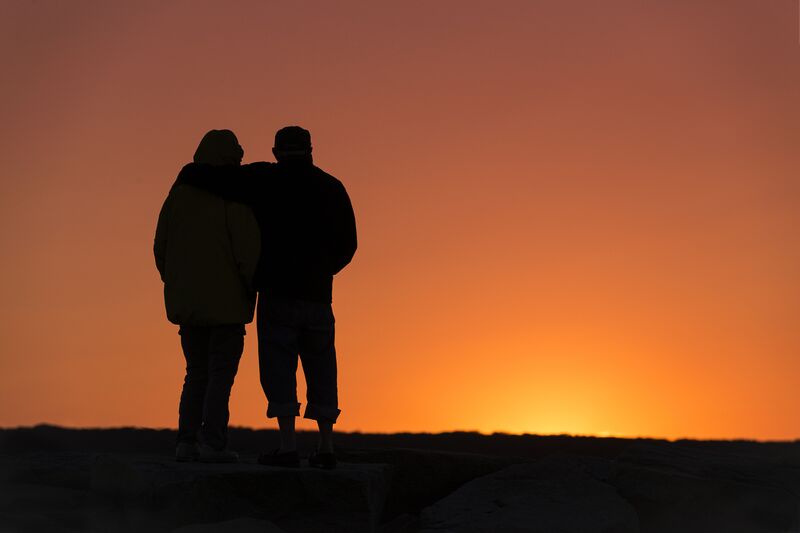
At any given moment, millions of people are grappling with the lingering impacts of a natural disaster. Last year a series of massive earthquakes struck Mexico. Floods in India, Nepal and Bangladesh killed over 1,200 people. Historic wildfires raged across the state of California and a string of powerful hurricanes devastated U.S. cities from Texas to the Virgin Islands.
These large events commonly steal the media spotlight for only a short while before they are replaced with the next crisis. However, the effects of these disasters can linger for years after their memory has faded from the public eye. Periodic reminders about the ongoing state of disarray in disaster zones can be just as important to the recovery efforts as coverage immediately following the event.
It may be easy for most RIT sudents who have no direct connection to places like Houston or Puerto Rico to forget about their ongoing plight, but the university is home to over 18,000 students. For some members of our community, the effects of hurricanes and floods are not so difficult to remember at all.
“We're a global community. We have people from everywhere, so when these types of things happen odds are there are going to be students here who are impacted in some way,” said Kerry Foxx, director of the RIT Center for Leadership and Civic Engagement (CLCE).
Even if no one we know has been directly impacted, when most people hear about a devastating natural disaster our first impulse is to help immediately in some way, often by giving money or material goods to help the relief effort. However, despite the urgency of the situation, if we don't stop to think about the impact of our well-intentioned charity we may wind up doing more harm than good.
Coordinating the Relief Effort
In the U.S., large-scale disaster relief operations involve a collaboration between federal and state government, non-profit relief agencies, local leaders and survivors themselves. These efforts often include tens of thousands of volunteers and personnel that must be coordinated across dozens of organizations.
This hardscrabble network must establish itself in a disaster zone within a matter of days in order to find out what damages occurred and who needs help. Unfortunately, one of the biggest challenges to restoring order immediately after a disaster is all the help that floods into the affected area. Leaders in the disaster zone have to manage the often overwhelming influx of volunteers, financial capital and physical donations so that nothing gets lost on its way to survivors.
It takes some time to build up enough infrastructure to begin accepting large volumes of donated physical goods like canned food and bottled water, toiletries, building supplies or even furniture and clothes. All these goods are often needed and appreciated long-term, but when too many of them arrive in a disaster zone too quickly, it creates what relief personnel often refer to as “the second disaster.”
“After Hurricane Katrina, people were sending clothes down to the area and we know that most of them had to be destroyed because there was no infrastructure in place to get the clothes from the port to people who needed them,” Foxx said.
It's not uncommon for volunteer centers to be forced into tossing out well-intended but poorly timed donations for lack of a place to store them. Disaster relief leaders generally recommend not donating anything in the first few days and weeks after a disaster except for money or, if you have specialized skills, your time. Sending the right thing at the wrong time can be worse than sending nothing at all.
“There comes a point in time when those types of things are helpful. It's never in the immediate wake of a disaster,” Foxx clarified.
That's why financially supporting experienced organizations which are part of the Volunteer Organizations Active in Disaster (VOAD) council is the best way to help initially. The American Red Cross, All Hands and Hearts and Habitat for Humanity are just a few of the major groups on the list. These organizations have the expertise, supply chains and connections to stretch your donated dollar as far as it can go.
Student Efforts
In the wake of past disasters, many RIT students have risen to the challenge and jumped aboard the effort to send financial support to recently afflicted areas. Greek life leaders have organized events to raise money, campus clubs like the Student Environmental Action League have run fundraisers and bake sales and the university has hosted Red Cross blood drives.
A number of students traveled in person to disaster zones in Texas and Florida to volunteer their time with RIT's Alternative Spring Break program. Maria Lelie is a second year Business Management major minoring in Environmental Studies, who went to Houston and spent time with a woman whose home was destroyed when Hurricane Harvey hit the Gulf coast last fall.
“When we got there Benny [the client] was standing outside of her home so we got to meet her right away,” Lelie said. “She told us why her house looked the way it did, what happened to her, what her experience was in the hurricane. Then we just went in and started working.”
Something that's often missed in the rush to help as many people as quickly as possible is the human element of any disaster. People don't want to be treated like charity cases to be pushed efficiently through a system, and that kind of detached way of helping isn't really what most volunteers are after. The relief organization Lelie worked with during her Spring break trip, Operation Blessing, understood this.
“Their one quote was 'hope inspires healing,'” Lelie said. “They wanted us to talk to the homeowners a lot because it would give them hope and faith that they're going to have their home restored. It comforts them, makes them feel like they're not alone in the process.”
Some students, like fifth year Information Technology major Thomas Kurien, have gotten even more creative with their efforts to contribute. He used his Twitch videogame streaming channel, Thespacen3rd, as a platform for disaster relief after Hurricane Harvey.
“We have quite a few people in Texas as well as Florida," Kurien explained. "Talking to them and listening to their hardships, I was like, 'Enough is enough.' I've got a pretty big community now, so we banded together to raise money for charity.”
Kurien reached out to other prominent streamers to coordinate a 24-hour streaming marathon. Together, they raised almost $12,000 for the American Red Cross' hurricane relief fund.
Moving Forward
As the inevitable finger-pointing and political unrest surrounding the disasters continue, stories like these get to the heart of what natural disasters should mean to the world at large.
“When the time comes for a scenario like hurricanes or wind storms or whatever to happen to you, wouldn't you want the same kind of help to get back up and running?” Kurien asked.
For survivors, the immediate aftermath is usually a time of incredible loss and uncertainty. But the silver lining of any disaster is the outpouring of support and the bonds that grow as people from every walk of life come together to heal devastating trauma. Cities that were the epicenter of widespread destruction become the focal point of renewed communities that spring up around the wreckage.
source: https://reporter.rit.edu/features/responding-natural-disasters-0


